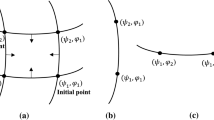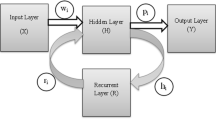Abstract
A set of moving nodes communicating with each other without any infrastructure is considered a mobile ad hoc network (MANET). Stability is a big problem with this type of network due to its variable location and variable speed with respect to time. As a result, link failure is a big problem in MANET. When the link fails, the network faces high packet drop and higher delay in delivery of the packets due to a new routing setup in most cases. In this paper, we have proposed a method to frame up a stable link network using a temporal data analysis model. In this model, we first analyzed the mobility and position of neighbor nodes with respect to each node from the temporal snapshot of the network. The statistical model ARMA (Auto Regressive Moving Average) is used for predicting the stable neighbors of each node in a future time frame. These stable neighbors can be used for creating a link between different nodes. The combination between different nodes builds a path between the source and destination. We applied a BBO (Biogeographic-based optimization) technique to estimate parameters relevant to the optimal path from source to destination nodes. This optimal link offers a stable and reliable connection for the remaining lifetime of the data transfer for the said network.







Similar content being viewed by others
References
Alotaibi, E., & Mukherjee, B. (2012). A survey on routing algorithms for wireless ad-hoc and mesh networks. Computer Networks, 56(2), 940–965.
Biradar, R. C., & Manvi, S. S. (2012). Neighbor supported reliable multipath multicast routing in manets. Journal of Network and Computer Applications, 35(3), 1074–1085.
De Rango, F., Guerriero, F., & Fazio, P. (2012). Link-stability and energy aware routing protocol in distributed wireless networks. IEEE Transactions on Parallel and Distributed systems, 23(4), 713–726.
Du, D., Simon, D., & Ergezer, M. (2009). Biogeography-based optimization combined with evolutionary strategy and immigration refusal. In 2009 IEEE international conference on systems, man and cybernetics (SMC) (pp. 997-1002). IEEE.
Ergezer, M., Simon, D., & Du, D. (2009). Oppositional biogeography-based optimization. In 2009 IEEE international conference on systems, man and cybernetics (SMC) (pp. 1009–1014). IEEE.
Guo, L., Peng, Y., Wang, X., Jiang, D., & Yu, Y. (2011). Performance evaluation for on-demand routing protocols based on opnet modules in wireless mesh networks. Journal of Computers and Electrical Engineering, 37(1), 106–14.
Jiang, S., He, D., & Rao, J. (2005). A prediction-based link availability estimation for routing metrics in manets. IEEE/ACM Transactions on Networking (TON), 13(6), 1302–1312.
Johnson, D. B., Maltz, D. A., & Broch, J. (2001). DSR: the dynamic source routing protocol for multi-hop wireless ad hoc networks. Ad hoc Networking, 5, 139–172.
Lalitha, V., & Rajesh, R. S. (2014). AODV\_ RR: a maximum transmission range based ad hoc on-demand distance vector routing in MANET. Wireless Personal Communications, 78(1), 491–506.
Ma, H., Ni S., & Sun, M. (2009). Equilibrium species counts and migration model tradeoffs for biogeography-based optimization. In Proceedings of the 48th IEEE Conference on Decision and Control, 2009 Held Jointly with the 2009 28th Chinese Control Conference, CDC/CCC 2009 (pp. 3306–3310). IEEE.
McCanne, S., & Floyd, S. Ns Network simulator. http://www.isi.edu/nsnam/ns/.
McDonald, A. B., & Znati, T. (1999). A path availability model for wireless ad-hoc networks. In 1999 IEEE Wireless communications and networking conference (WCNC) (Vol. 1, pp. 35–40). IEEE.
Mo, H., & Xu, L. (2010). Biogeography based optimization for traveling salesman problem. In 2010 sixth international conference on natural computation (ICNC) (Vol. 6, pp. 3143–3147). IEEE
Perkins, C., Belding-Royer, E., & Das, S. (2003). Ad hoc on-demand distance vector (AODV) routing. Technical report
Perkins, C. E., & Bhagwat, P. (1994). Highly dynamic destination-sequenced distance-vector routing (DSDV) for mobile computers. In ACM SIGCOMM computer communication review (Vol. 24, pp. 234–244). ACM.
Sarma, N., & Nandi, S. (2010). Route stability based QoS routing in mobile ad hoc networks. Wireless Personal Communications, 54(1), 203–224.
Simon, D. (2008). Biogeography-based optimization. IEEE Transactions on Evolutionary Computation, 12(6), 702–713.
Singh, J. P., & Dutta, P. (2009). Temporal behavior analysis of mobile ad hoc network with different mobility patterns. In Proceedings of the international conference on advances in computing, communication and control (pp. 696–702). ACM
Singh, J. P., & Dutta, P. (2010). Temporal modeling of node mobility in mobile ad hoc network. CIT Journal of Computing and Information Technology, 18(1), 19–29.
Singh, J. P., & Dutta, P. (2011). Temporal modeling of link characteristic in mobile ad hoc network. CIT Journal of Computing and Information Technology, 19(3), 143–154.
Song, Q., Ning, Z., Wang, S., & Jamalipour, A. (2012). Link stability estimation based on link connectivity changes in mobile ad-hoc networks. Journal of Network and Computer Applications, 35(6), 2051–2058.
Sridhar, K. N., & Jacob, L. (2006). Performance evaluation and enhancement of a link stability based routing protocol for MANETs. International Journal of High Performance Computing and Networking, 4(1–2), 66–77.
Torkestani, J. A., & Meybodi, M. R. (2011). A link stability-based multicast routing protocol for wireless mobile ad hoc networks. Journal of Network and Computer Applications, 34(4), 1429–1440.
Vadivel, R., Bhaskaran, V. M., Paruya, S., Kar, S., & Roy, S. (2010). Adaptive reliable routing protocol using combined link stability estimation for mobile ad hoc networks. In AIP conference proceedings (Vol. 1298, pp. 625–632). AIP.
Wallace, A. R. (2011). The geographical distribution of animals: With a study of the relations of living and extinct faunas as elucidating the past changes of the earth’s surface (Vol. 1). Cambridge: Cambridge University Press.
Yadav, A., Singh, Y. N., & Singh, R. R. (2015). Improving routing performance in AODV with link prediction in mobile adhoc networks. Wireless Personal Communications, 83(1), 603–618.
Author information
Authors and Affiliations
Corresponding author
Additional information
Publisher's Note
Springer Nature remains neutral with regard to jurisdictional claims in published maps and institutional affiliations.
Rights and permissions
About this article
Cite this article
Pal, A., Dutta, P., Chakrabarti, A. et al. Biogeographic-Based Temporal Prediction of Link Stability in Mobile Ad Hoc Networks. Wireless Pers Commun 104, 217–233 (2019). https://doi.org/10.1007/s11277-018-6016-7
Published:
Issue Date:
DOI: https://doi.org/10.1007/s11277-018-6016-7




